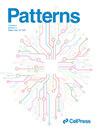迈向自动化和可解释的单细胞高通量扰动分析。
IF 6.7
Q1 COMPUTER SCIENCE, ARTIFICIAL INTELLIGENCE
引用次数: 0
摘要
由于细胞反应的复杂性,单细胞RNA测序(scRNA-seq)数据中的微扰分析具有挑战性。为了解决这个问题,Xu和Fleming等人开发了CellCap,这是一种生成式深度学习模型,可以解码对特定细胞状态的扰动效应。CellCap提取可解释的扰动响应模块的潜在表示,识别在各种条件下激活的关键细胞通路。这允许更深入地了解细胞状态对遗传,化学或生物扰动的特异性反应。本文章由计算机程序翻译,如有差异,请以英文原文为准。
Toward automated and explainable high-throughput perturbation analysis in single cells.
Perturbation analysis in single-cell RNA sequencing (scRNA-seq) data is challenging due to the complexity of cellular responses. To address this, Xu and Fleming et al. developed CellCap, a generative deep-learning model that decodes the perturbation effect on a particular cell state. CellCap extracts interpretable latent representations of perturbation response modules, identifying key cellular pathways activated under various conditions. This allows for a deeper understanding of cell-state-specific responses to genetic, chemical, or biological perturbations.
求助全文
通过发布文献求助,成功后即可免费获取论文全文。
去求助
来源期刊

Patterns
Decision Sciences-Decision Sciences (all)
CiteScore
10.60
自引率
4.60%
发文量
153
审稿时长
19 weeks
期刊介绍:
 求助内容:
求助内容: 应助结果提醒方式:
应助结果提醒方式:


